" Philippines Government Protects "
"Authority And Control, Safety And
Civility For Everyone"
The Philippines government upholds the Philippine Constitution to secure everyone. It soars as the Philippines Flag does in every barangay.
It affords your simple-to-elegant destination needs for courtesy and security in-country. Expatriates can count on government for equal treatment and protection which local nationals enjoy. It exists for the common good.
The Philippine government is republican in form and patterned after that of the United States. It ensures the rule of law will apply to all… the national citizenry and foreigners alike.
You can rely on the considerate nature and friendliness of local law enforcers who love to treat foreigners well.
Here are some facets of Philippines government…
Share Your Thoughts About The Philippines
Do you have a story or experience to tell about the Philippines? Share it here with the world. Just fill the form below.
Here We Go…
Republic Of The Philippines … Name Of A Nation State
This is the official name of the Philippines as a nation state since the country’s independence in July 4, 1946. This name, this nation in-being is the object of the Philippines Government's mandate. It has undergone several changes in the course of the country's history.
During the Philippine Revolution, it was called the “Philippine Republic”. It became “Philippine Islands” during the Spanish-American War-Commonwealth interval. During the American period the name “Philippines” appeared and since then became the country's common name.
Here’s that historic official program of the July 4, 1946 Independence Day ceremonies at the Luneta, c/o Philippines government this page…
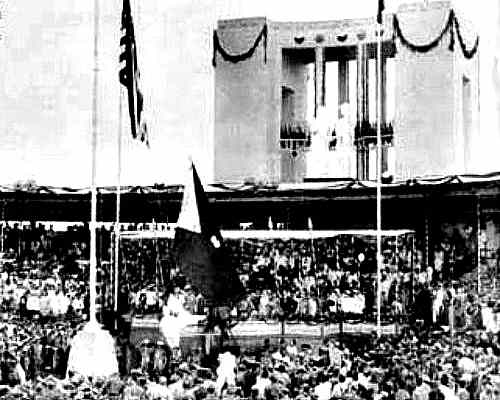
Source: http://www.freewebs.com
Constitution Of The Philippines … Supreme Law Of The Land
The Constitution of the Philippines is the supreme law of the Philippines. The one currently in effect is the "1987 Constitution" which was enacted in 1987 during the Corazon Aquino Presidency.
Interestingly, there have been 9 other historical constitutions of the Philippines.
The Philippines Flag … The Sacred Symbol
In 1898, the Philippines Flag was hand sewed for 5 days by Marcela Mariño de Agoncillo and two other women who were in exile in Hong Kong at the request of General Aguinaldo. The design was Aguinaldo’s. The flag was raised first on the balcony of Aguinaldo's home in Cavite on June 12, 1898 proclaiming independence from Spain.
What’s in it for you?... simple, the Pinoy, a friend to world citizenry. Here’s that flag, c/o Philippines government this page…
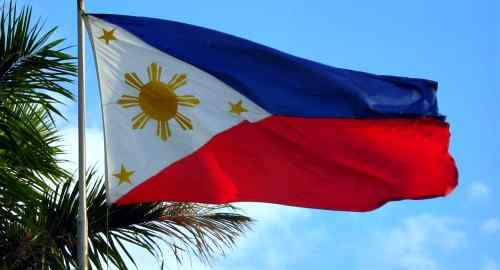
President Of The Philippines … Top Man Of The Land
The President is the head of state and head of government. He leads the executive branch of the government and is the commander-in-chief of the Armed Forces. His term is 6 years.The incumbent (2011) President Benigno S. Aquino III is the 16th on the roster.
Senators Of The Philippines … Presidential Timbers
The Senate of the Philippines is the upper chamber of the bicameral legislature of the Philippines. The Senate has 24 senators elected nationwide at-large.
Senators serve 6-year terms. Half of them are elected every 3 years to ensure a continuous body. A Senator usually becomes a Presidentiable.
The Senate is the only body that can concur with treaties.
Supreme Court Of The Philippines … The Top Arbiter
It is the Philippines' highest judicial court and court of last resort. It consists of 14 Associate Justices and 1 Chief Justice.
Here's the Court’s seal, c/o Philippines government this page…
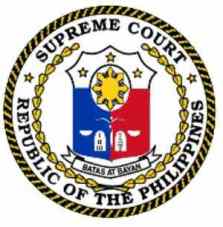
DFA … The Department Of Foreign Affairs
This department attends to any or all matters pertaining to the country’s relationships with other countries. It was created on June 23, 1898 during Aguinaldo’s reign. Apolinario Mabini was the Department’s first Secretary.
Here's the DFA seal, c/o Philippines government this page…
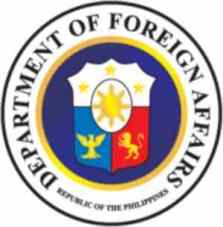
Armed Forces Of The Philippines … Protector Of The People
It is the defender of the Republic of the Philippines. Its Commander-in-Chief is the President. It is composed of the Philippine Army, the Philippine Navy, and the Philippine Air Force.
Here’s the AFP emblem, c/o Philippines government this page…
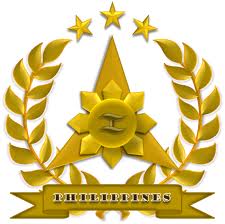
Philippine Army … Defender Of Philippine Landed Estate
The Philippine Army trains and organizes army forces to conduct combat operations and execute national defense plans. It is the country's primary defense on land.
Philippine Navy … Defender Of Philippine Territorial Waters
The Philippine Navy is responsible for protecting all 1,250,000 square kilometers of the Philippines' water territory. It is composed of two major commands, the Philippine Fleet and the Philippine Marine Corps.
Philippine Air Force … Defender Of Philippine Air Space
The Philippine Air Force provides the country with the best air force defense possible.
Philippine Scouts … In The Bosom Of History
The Philippine Scouts was a unit of the United States Army from 1901 until the end of World War II. It was manned by Filipinos.
They were pitted against their fellow Filipinos during the Fil-American War… a twist in Philippine military history that present day Filipino soldiers may scoff at. It was disbanded in December 1948.
The Scouts who captured General Aguinaldo were called “Macabebe scouts” because they came from Macabebe, Pampanga. Here’s those such Scouts, c/o Philippines government this page…
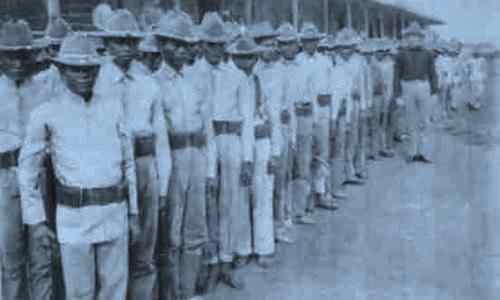
Source: http://www.freewebs.com
Philippine Politics … Debates Don’t Die
When Filipino politicians debate, it augurs well for a healthy Philippine society. In the Philippines, you can have peace of mind in what you are doing without worrying about politics. Politicians will not disturb you.
Spending your holiday in-country makes Filipino politicians proud you are around.
ARMM … Autonomous Region For Muslim Mindanao
The ARMM is composed of predominantly Muslim provinces… Basilan (except
Isabela City), Lanao del Sur, Maguindanao, Sulu and Tawi-Tawi. It is the
only region that has its own government.
Labor Code Of The Philippines … Affords Labor Protection
This Code constantly evolves to benefit the national workforce, which increases 450,000 heads annually, and foreigners working in-country. Capitalists cannot just exploit their employees because the Code stands in their way.
Civil Code Of The Philippines … Civility Through Law
This Code governs family and property relations in the Philippines. It
was enacted in 1950. On matters pertaining to marriage and family
relations, it is corroborated by the Family Code of the Philippines.
DILG … The Department Of Interior And Local Government
It is responsible for promoting peace and order, ensuring public safety, and strengthening the capabilities of local government units. It is also responsible for the Philippine National Police.
US Embassy In The Philippines … It Delivers
It is located along Roxas Boulevard in Manila. Its flagpole withstood WWII… never restored and still retains the bullet holes it sustained during the war. It is sentimentally valued by both Filipinos and Americans.
For now…
In Closing
The Philippine government affords your simple-to-elegant destination needs for courtesy and security in the Philippines.
You can rely on the considerate nature and friendliness of local law enforcers who love to treat foreigners well.
It is hoped the foregoing scant review didn’t tire you.
If you are convinced, consider to come and SEE, LIVE or INVEST in the Philippines.
Share Your Thoughts About The Philippines
Do you have a story or experience to tell about the Philippines? Share it here with the world. Just fill the form below.
Like this page?
Back to top
Return from Philippines Government to Top Destination Choice The Philippines home page







New! Comments
Have your say about what you just read! Leave me a comment in the box below.